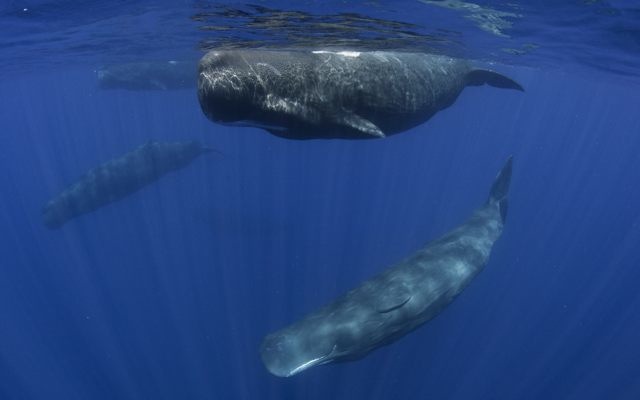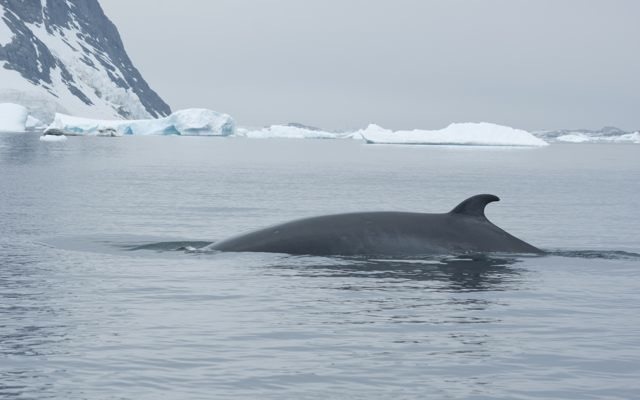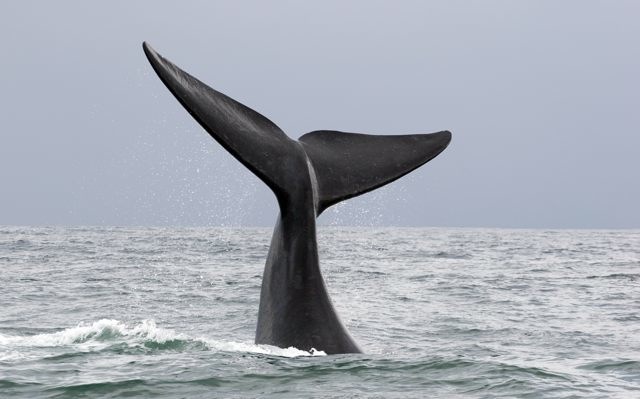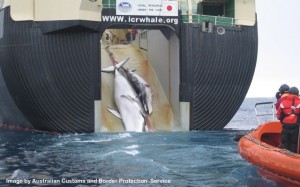Bogus Commercial Whaling. The reality can’t be justified. It needs to end.
After a century of unrestrained mechanized whaling, only a sad remnant of whale populations remain.
Bogus Whaling
Above: Soviet whale-killers in 1975, shooting immature sperm whales at Hawaii’s 12-mile limit off Kauai. The second photo is a pile of the lower jaws of these young sperm whales arrayed on deck. The meat of sperm whales isn’t eaten. The wax in the sperm whales’ head was considered to be a “strategically useful” material for the Soviet Union according to party doctrines.
OK, we admit that “bogus whaling” is a term coined by EarthTrust.
So what does ET mean by “bogus whaling”?
well, we mean the word “bogus” in its standard definition:
bo·gus, adjective 1. not genuine or true;. fake, spurious, false, fraudulent, sham, deceptive
In other words, there could be – at least in theory – whaling which is conducted honestly, on non-endangered, non-threatened species in a sustainable way, using humane methods, with disclosure of quotas, hunting and killing practices, and the disposition of the catch. The sort of whaling that many nations pretend to. The name for this sort of activity, in whaling-commission jargon, is “commercial whaling”.
At the other extreme, there’s the all-too-real “pirate whaling”, which is what it sounds like: ships blasting whatever they see, and hiding it in various ways.
And then there’s “bogus” whaling: whaling which involves lying, misdirection, smuggling, waste, false pretexts, hidden records, inhumane hilling, false labeling, and the targeting of threatened or endangered species…. under the guise of respectable commerce, “accidents”, or science.
We’d submit that most whaling in the last century has been bogus whaling, by any reasonable standard of honest resource management. Whaling nations which are calling for a return to unrestrained whaling need to own up to this fact.
We at EarthTrust have fought for the whales since 1976, under our Save the Whales International program. We’ve lived through a huge amount of whaling history in that time. And it has taught us that the whaling industry is not deserving of much respect. We are divided from them not just by an honest difference of opinion over whether or not whales should be harpooned. An even clearer divide tends to be basic ethics.
Humpbacks have been “protected” since 1966. So what was this baby humpack doing in pieces on a Japanese doc in 1979 when this pic was snapped?
Are there honest whalers? Yes, we’ve met some. Many whalers of Iceland and Norway, and some of the native whalers, are honest people with decent environmental ethics; although Iceland and Norway have gotten their hands dirty aligning with Japan’s reprehensible industry as a high-priced marketplace for their products, and in voting with Japan at the IWC.
However, the numbers show that most whaling this century has been bogus. Even before the IWC was created after WWII, there was a pretext of killing quotas, but the reality was “see a whale, shoot it”. Many nations were involved and culpable in clearing the seas of whales; the USA conducted whaling until 1972.
The history of deep-sea harpoon-ship whaling can be seen in the ships which put themselves out of business. Right whales were hunted until there were too few to commercially target. Once whales began being taken primarily for their meat, fast new killer ships were made to target blue whales, and hunted them until they couldn’t be found in any numbers, at which point those ships were scrapped. Then smaller ships were built to target fin whales, which were likewise hunted to near commercial extinction. Then the same thing happened with the brydes, and sei whales; in all cases blasting whales until they couldn’t be found in enough numbers to justify the hunt. Now the whalers seeking quotas, like Japan, have shifted to minke whales, the smallest of the rorqual whales, which still exist in reasonable numbers because they were considered too small to be worth shooting in the past.
This is a shonan-class whaling ship, built by Japan to hunt fin whales. The ships outlasted the whales, and were mostly scrapped. A few, like this one, are used as enforcement vessels.
It may seem insane to manage a “resource” in such a way. Surely, the whalers would want to keep whale populations at an optimum, right? Well, not really: whales reproduce really slowly. More slowly than interest paid on investments in real estate, industry, or just money in the bank. So it makes financial “sense” to kill them all, scrap the ships, and let the money reproduce instead of the whales. It has been the economics of extinction for many species.
On top of this is the “tragedy of the commons” aspect: in an unregulated industry, human behavior leads to a competition to wipe out a shared resource to maximize the benefit to individual actors. So in a TOC scenario, whalers benefit by maximizing their kill while pretending otherwise. And that’s what happened, repeatedly.
For instance, between 1948-1973, the USSR reported to the IWC that they had killed 2710 humpbacks. However, internal Soviet records, divulged after the fall of the USSR, showed that they had taken 48,477 humpbacks during that period, largely eradicating the humpback songs of the southern hemisphere. The Soviets killed the whales for basically no reason other than to satisfy obscure requirements of the ubiquitous USSR 5-year economic plans.
A highly recommended article on the Soviet debacle notes:
“It was one of the fastest decimations of an animal population in world history—and it had happened almost entirely in secret. The Soviet Union was a party to the International Convention for the Regulation of Whaling, a 1946 treaty that limited countries to a set quota of whales each year. By the time a ban on commercial whaling went into effect, in 1986, the Soviets had reported killing a total of 2,710 humpback whales in the Southern Hemisphere. In fact, the country’s fleets had killed nearly 18 times that many, along with thousands of unreported whales of other species. It had been an elaborate and audacious deception: Soviet captains had disguised ships, tampered with scientific data, and misled international authorities for decades. In the estimation of the marine biologists Yulia Ivashchenko, Phillip Clapham, and Robert Brownell, it was “arguably one of the greatest environmental crimes of the 20th century.”
Most of the world’s remaining humpback whales were eradicated for obscure and senseless arbitrary reasons as part of Soviet 5-year plans.
Japan was doing the same, and ultimately swapped observers with the USSR so they could monitor one another’s overkills. But Japan’s real records have never been made public. All that’s known is that they were huge.
So most whales killed in the last 70 years were killed by an industry which was lying to the world about it, under the pretense of managing a common resource.
Estimates of historic whale populations have been skewed by this false data, making it seem as though the number of whales remaining is a reasonable fraction of historic populations. This, in turn, is used as a rationale to argue for renewed whaling. It’s hard for people today to realize just what has been lost, how many whales formerly existed in healthy seas.
For instance, in February of 2013, a groundbreaking paper (co-authored by C. Scott Baker and Stephen Palumbi, EarthTrust’s initial DNA scientists for the Whale DNA campaign), demonstrated using genetic methods to estimate the original population size. Prior estimates had guessed at an original population of 46,000 Atlantic humbpack whales, compared to an estimated current population of 17,000. However, the DNA results showed that initial populations were two to three times that high, or higher. That underscores the double whammy of using past bogus “catch data” in modeling whale populations.
C. Scott Baker in 1993 in a Tokyo hotel room, as part of ET’s undercover analysis of Japan’s whale-meat market.
And the bogus whaling continued into more recent times. The IWC presided over the near-eradication of many species of whales, under the guise of resource management. Partly, the problem was the old “tragedy of the commons” which rewarded nations for lying about their kill levels. In addition, IWC nations like Japan could and did contract with non-IWC member nations to take endangered and threatened species and export the meat to them, which wasn’t counted by the IWC. This was particularly dangerous to small remnant local populations.
The IWC acted as a “whaler’s club”, which allowed bogus science to be used as well. The mathematical models used by the IWC in setting kill quotas were nothing if not malleable.
One painful example we were involved in: In early ’77, Hawaii congresswoman Patsy Mink decided to champion the cultural rights of the Alaskan Inuit with regard to killing endangered bowhead whales. (Which are, interestingly the longest-lived giant-brained creatures on earth.)
She managed to get a small bowhead kill quota for US natives by trading with Japan on the sperm whale quota.
The way this was managed behind closed doors was by inserting an arbitrary coefficient into the sperm whale population model, relating to the increased efficiency of killing sperm whales using ASDIC sonar. The data seemed to indicate that 100% was right, but the dealing with Mink resulted in a bilateral agreement between Japan and the USA that the coefficient be changed to 5%. This created a “paper reality” in which the population of sperm whales exploded, and the kill quota was raised from 763 in ’77 to 6,444 in ’78. A little political leaning and the stroke of a pen doomed thousands of additional sperm whales. And this was very much business as usual, and if we may say so, bogus. (Years later, the ASDIC coefficient was retroactively reset to 100%, once the whales had been taken).
And this political malleability at the IWC was maintained by the whalers by stacking IWC membership with client states who would vote with the whalers, which was pretty bogus. It was only in the ’80’s as conservationists started bringing pro-whale nations into the IWC, that anything like conservation could be considered seriously. Of course, that has caused many threats by whaling nations to leave the IWC entirely, and some have.
Still bogus after all these years.
Japan, documented by Australia’s border patrol, blasting both adult and baby minke whales as part of what they call “research”. All such whales wind up in the commercial marketplace, where they help obscure smuggled whale products.
And still today, the word “bogus” applies to what passes for commercial whaling. Japan’s entire whaling industry is based on a loophold of the ICRW which allows nations to award themselves research permits. So every BIT of minke whale sashimi and sushi is officially part of a Japanese government “research” project which pretty much nobody in the world thinks is really “research”. Nations like Korea finesse the issue by saying that “accidental” kills in nets may be legally sold… which has let to the active netting of whales in large numbers.
And DNA testing of markets shows that endangered whales are still making it to the biggest whalemeat markets. The initial EarthTrust studies of Japan, even with a small sample size, showed fresh humpback meat available three decades after the IWC set zero quotas on humpbacks.
With the oceans warming and becoming more acidic, the whales’ food supplies will become less dependable. Plankton will lose creatures with carbonate skeletons. Krill populations will collapse, and the undersides of ice shelves where many whales feed will be going away.
The 21st century is no place for a whaling industry. The past century of whaling was shamefully destructive, and current whaling is done with deception, dishonesty, deniability, smuggling and mis-labeling.
The bottom line is that “commercial whaling” owes an environmental debt to the world commons that can never be repaid. At the very least, the war on whales needs to end to see which species can recover.
Reality Check – Whalers Lie
A large percentage of the worlds whales were destroyed, basically for little to no reason, in a collusion between Japan and the USSR.
The USSR is now defunct – which is the only reason we know about it. Brave Russian scientists hid the records and exposed the truth once the USSR fell, of the insane destruction of the whales to follow arbitrary communist 5-year plans.
There were no analogous brave Japan scientists. The corporations in Japan which participated in a conspiracy to help hide the dual-book whale-kill accounting are still all in business. It’s no coincidence that there have been many face-offs between ET, Japan’s Whaling Association, and the Japan Fisheries Association. Not to put too fine a point on it, but they lie a lot, and have been doing so for a very long time.
This linked article really something you should read, and you should bear it in mind every time you hear Japan’s position on a whaling issue. If Japan wished to take an honorable course, it would pursue a zero kill quota, if only for its past disgraceful conduct. There have never been any penalties levied against Japan’s corporations for its collusion with the USSR.






















